Why Stoves & Fireplaces Are The Best Way To Heat Your Home [& 5 ways to make them efficient]
How are you going to keep your house warm this winter?
Easy! Crank up the thermostat, right?
We've been there!
It sure is convenient, but the effect cranking up the thermostat can have on your bank account might hurt. For each degree you adjust your thermostat, you could lose about $10 per month.
Let us give you some friendly advice:
If you're looking for a great way to heat your home, consider using a fireplace or stove. At Ebyland, we've learned that fireplaces and stoves are beautiful, efficient, low-cost, and use renewable energy sources.
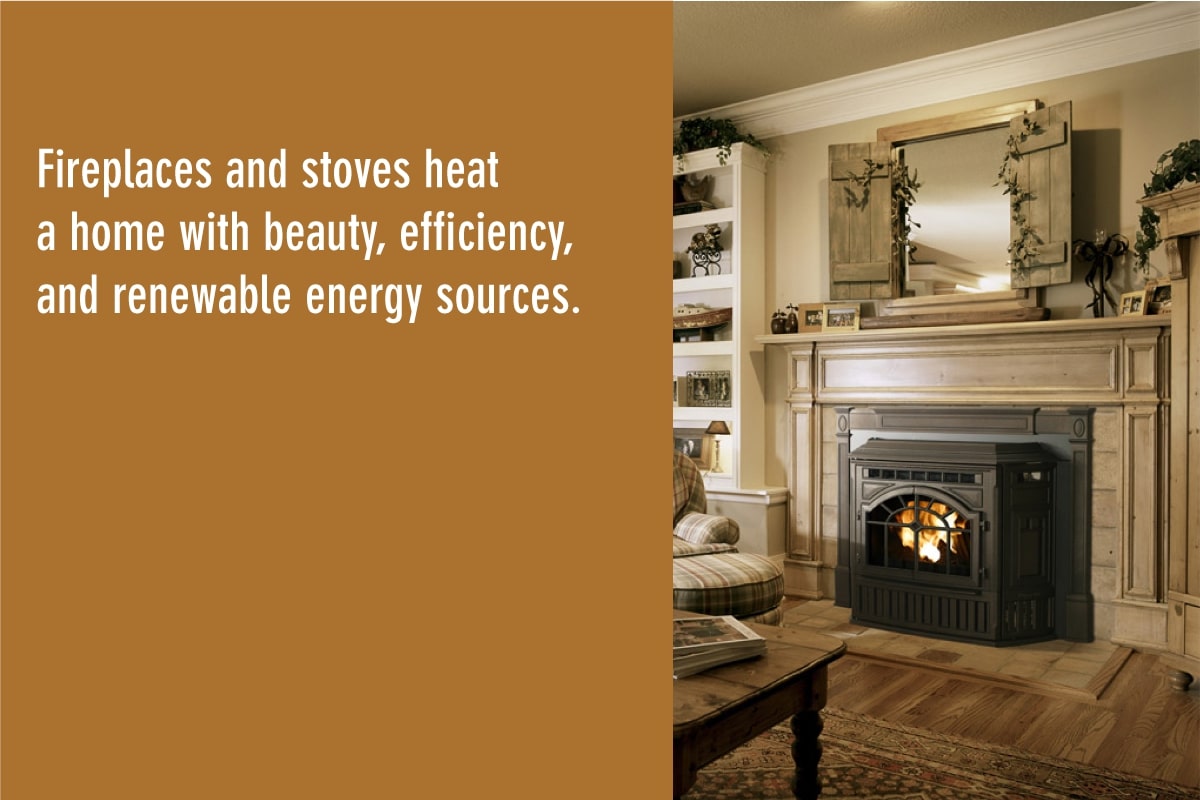
But the thought of installing a fireplace or stove probably brings up a lot of questions in your mind. Questions like:
- Will a fireplace or stove heat my whole house?
- Do fireplaces and stoves require ductwork?
- How would I know which fireplace or stove is best for my home?
Those are fair questions, and we’re here to help you answer them.
If you’d like to learn more about fireplaces and stoves and whether or not one might be a good option for your home, keep reading.
Let’s get to it!
What Are The Core Differences Between Fireplaces And Stoves?
The first step is choosing whether you prefer a fireplace or a stove. Although the two are similar, they aren't the same and have different pros and cons.
A fireplace is a ventilated structure designed to contain a fire safely. Fireplaces are typically made of heat-resistant materials, like brick or stone that can withstand fires.
The interior of a fireplace is known as a firebox. The pellets, wood, or gas can burn safely inside the firebox.
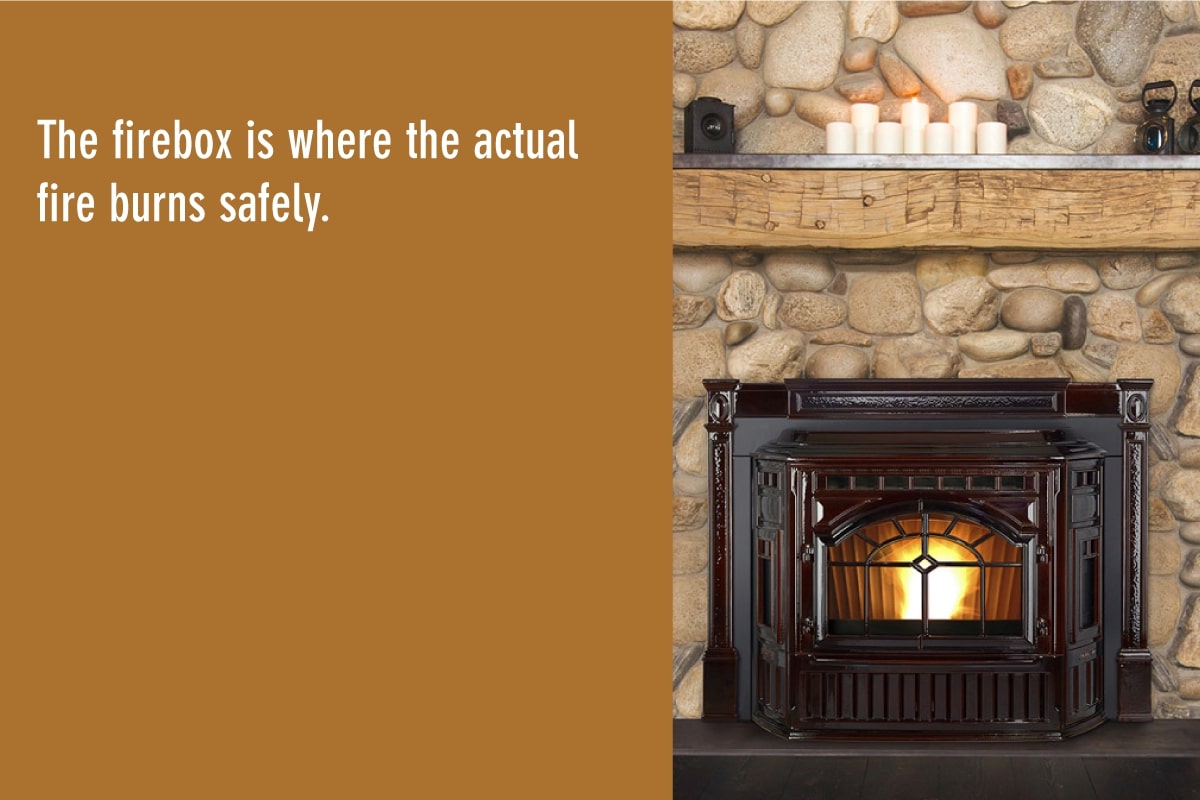
The firebox connects to a hollow flue that leads upwards to the chimney. Smoke escapes the firebox through the flue and chimney, while fresh air enters the firebox from the room or a fresh air intake.
Fireplaces have been around for centuries. Their basic design allows homeowners and family members to enjoy the benefits of a warm, cozy fire inside their home, with its wonderful crackling, flickering ambiance!
Instead of gathering around the TV, you can converse with family members or guests in front of your fireplace. It seems like nothing invites good conversations like a cozy fire!
Like fireplaces, stoves are designed to contain a fire safely.
The primary difference between them lies in their construction. Fireplaces are constructed as a structure — typically made of brick or stone — and are part of your home’s infrastructure. Stoves can also be built into your home, but are often stand-alone heating devices.
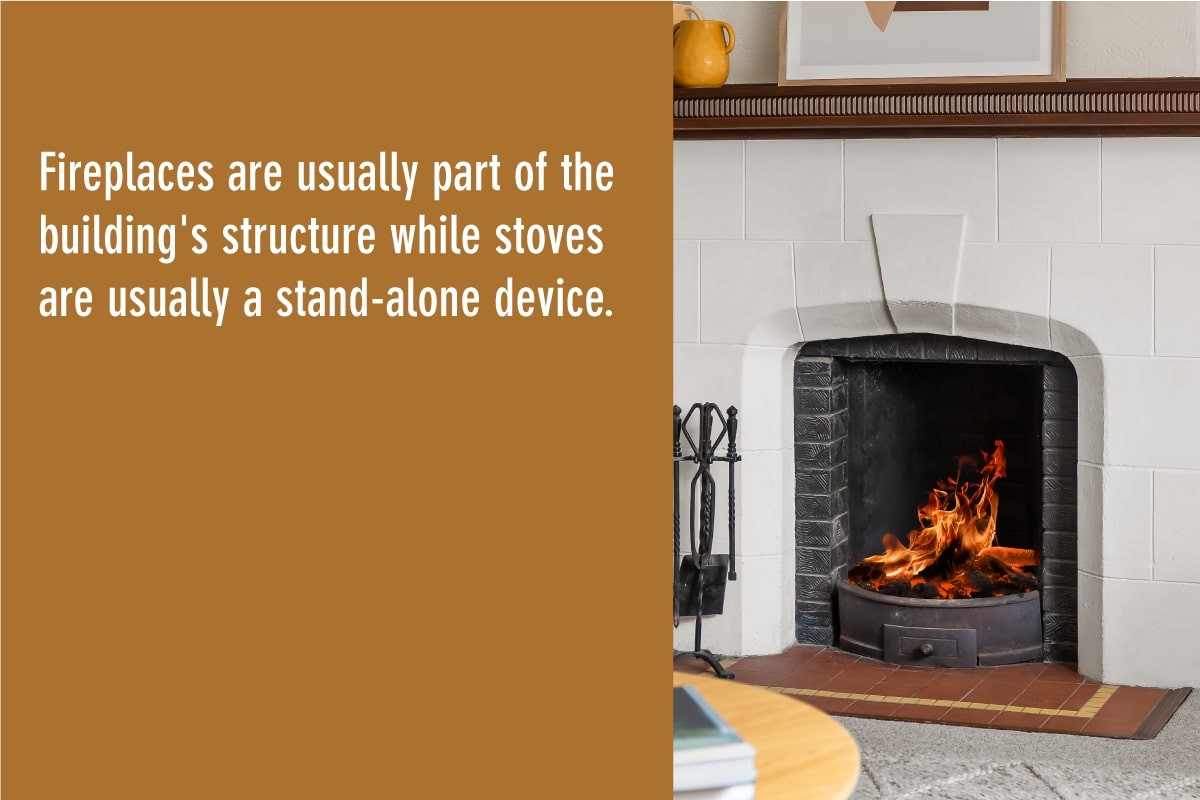
Stoves are most commonly constructed using multiple pre-fabricated components.
Stoves typically consist of three parts: a firebox, a ventilation pipe, and a chimney.
The firebox, of course, is the main compartment where the burning takes place. The ventilation pipe is a hollow pipe that connects the firebox to the chimney.
You can easily heat your entire home with a fireplace or stove - just ensure you buy the suitable model. Some models are rated for only small houses, but even standard models can heat areas up to 1,500 sq. feet.
Three Main Types of Fireplaces And Stoves
When you think of cozy evenings around the fireplace, there’s a high chance you picture a crackling wood fire, maybe in a majestic stone fireplace.
While wood is an excellent option for fuel in fireplaces and stoves, you have more options than just wood.
Three major categories of fuel usually define fireplaces and stoves:
- Wood-burning
- Gas-burning
- Wood Pellets
Let’s look at each of these, along with the pros and cons of each fuel type.
Wood-burning
This isn’t rocket science. Wood-burning stoves and fireplaces use wood as their heat source. People have been burning wood to stay warm for centuries.
You simply feed logs into the firebox to operate a wood-burning stove or fireplace. Your stove or fireplace, the size of your house, and the wood quality dictate how often you need to replenish your fire.
Most stoves and fireplaces have a recommended burn time, which tells you how often you should load your stove or fireplace. Generally, efficient models allow 8-10 hour burn times.
So, what are some advantages and disadvantages of burning wood compared to using gas or pellets?
Advantages of burning wood
- It runs independently of electricity - you don’t have to worry about losing heat during a power outage, and you will never be out of a heat source.
- Wood is a natural and renewable energy source.
- Burning wood offers a cozy ambiance, a wonderful cracking sound, and a soothing fire smell. There is just nothing like it!
Disadvantages of burning wood
- Burning wood requires more clean-up and maintenance than pellets or gas.
- You will need to acquire and store a lot of firewood.
- Wood can be hard to handle, so if you are elderly or injured, it may be difficult for you.
Annual maintenance inspections are highly recommended. (Cleaning and inspection cost around $100 - $200 a year.)

Gas-burning
Gas stoves and fireplaces run on natural gas or propane. The heat output is measured in British thermal units (BTUs), with models ranging from 8,500 to 100,000 BTUs.
The most popular models fall in the 20,000 to 60,000 BTUs range, although newer high-efficiency models allow you to adjust the heat output. Consult a local heating professional to determine the correct heat output for your home and heating needs.
Why would you install a gas fireplace or stove in your home? (or why not?) Here are a few pros and cons of using a gas stove.
Advantages of using gas
- Using gas makes heating your home easy. Just press the on/off button, and you're good to go. No loading, lighting, or tending to the fire is necessary. If you are elderly or injured, this may be essential.
- Gas burns cleaner than wood, emitting less soot and pollution, which means it's more eco-friendly, and you won't need to clean your stove out as often.
- Gas stoves and fireplaces require only occasional maintenance - usually just an annual inspection, which costs about $75 - $150.
- Burning gas does not use electricity, making it reliable in an emergency.
Disadvantages of using gas
- Gas fireplaces tend to cost more upfront. And in many cases, they also require more to operate. (even though they burn more efficiently) Note: Operating costs heavily depend on gas prices, which fluctuate significantly.
- Natural gas and propane are non-renewable resources.
- You will need a gas line to run the stove or fireplace.
- Gas does not provide the same romantic ambiance that wood does.

Wood Pellets
Wood pellets are a heating fuel made from compressed wood fibers. Each pellet is about 1 - 1.5 inches long. They often come in 40 lb bags - about the size of a big bag of dog food. Most people can handle a 40 lb bag of pellets, but this could be a concern if you have back issues or other physical infirmities.
Pellet stoves and fireplaces are equipped with a hopper, a container for storing the pellets. Your job is to fill the hopper, and the stove does the rest.
A motorized auger inside the hopper feeds the pellets into the firebox for a continual heat source.
Models vary in hopper size, but the hopper needs to be replenished about once a day.
Advantages of burning pellets
- Pellets are more compact than traditional wood, allowing for more accessible storage.
- Low particulate emissions compared to traditional wood (but more than gas).
- Pellets are considered a renewable fuel source
- Since they are so compact, pellets burn long and efficiently.
- They are much easier to handle than real wood logs.
Disadvantages of burning pellets
- Pellets are more expensive than traditional wood.
- A pellet stove needs electricity to run. Although this is very minimal (about $9 per month), you would be without heat during a power outage.
- Pellet stoves and fireplaces need daily attention to keep replenishing the fuel supply.
- Pellets can be spilled and make a mess if your child or pet decides to play in them.
Pellets are not the only processed wood fuel source. For more info on different ways to heat your home with wood, check out our blog, The Ultimate Guide To Wood Fuel Types.

Four Reasons To Choose A Fireplace Or Stove Over A Central Warm Air Furnace
The vast majority of homes in the U.S. use a furnace for heating.
A furnace is designed to heat and distribute air through air ducts in your home. They are often powered by natural gas, propane, heating oil, or electricity.
(As a friendly bonus tip, let us tell you that if you decide to install a furnace in your home, power by natural gas is the way to go.)
There's no denying that central heating systems get the job done.
But why are stoves and fireplaces better options than furnaces? (even natural gas furnaces).
1 - Aesthetics
It's said that a picture is worth a thousand words. We're pretty sure that's true. Just in case, let's check.
Would you prefer this forced air central heating system:

Or, would you like this pellet fireplace insert?
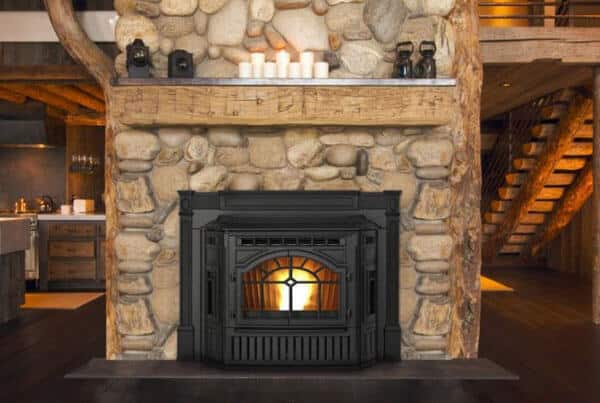
It's not much of a competition, is it?
The pellet fireplace is cozy, warm, and inviting, while the forced air system is plain, metallic, and harsh. It could not be placed anywhere in your home except in the basement or utility closet.
You can choose a wood, pellet, or gas stove or fireplace, and you'll get the same results:
A dazzling display of flames that is mesmerizing to watch and promotes excellent conversations.
A wood fire, in particular, combines the flames with a pleasant aroma and a pleasant, crackly sound that creates an enjoyable and relaxing ambiance inside your home.
And this isn't all just a mental game. The sensation you get while sitting around a cozy fire is real.
Christopher Lynn, an anthropologist from the University of Alabama, has proven that sitting around a fire causes 'consistent blood pressure decreases' and that the longer people gather around a fire, the more relaxed they become.
How cool is that? Heat your home and lower your blood pressure at the same time. It's a win-win!

2 - Efficiency
Anyone who's ever lived with a forced hot air system is likely familiar with the challenges of this type of heat. The room warms quickly but then cools equally fast, forming a yo-yo heating pattern causing your furnace to turn on and off, wasting energy.
Forced hot air systems are also subject to parasitic heat loss.
Because the air from the furnace and air handler has to travel through a series of tubes or ducts to reach its intended room, there are many opportunities for it to leak out of small holes in the ducts, decreasing efficiency.
Also, the ducts for this type of system often travel through cold attics or basements, increasing the chances of losing heat as the warm air travels to the rooms in your home.
Finally, forced air systems often cause stratification - a situation where the top of your room is warm (sometimes as much as 10 degrees warmer), and the bottom part is cooler.
This happens because hot air shoots out of vents on the floor and rises to the ceiling. This means you may have to turn your thermostat up to get the heat to reach the portion of the room you live in.
Fireplaces and stoves heat your home using radiant heat. Radiant heat is more efficient than forced air heat because it heats your home slowly and steadily and avoids parasitic heat loss and stratification.
In fact, research has shown that radiant heating is about 25% more energy-efficient than forced air. Plus, it means you won't constantly switch in and out of a sweater!
But be careful.
If you want to heat your home using a wood or pellet fireplace or stove, you need quality fuel. For example, if you burn wet wood in your wood stove, your energy savings will all be lost.
Ensure you are burning dry, clean fuel like the quality wood fuels from Ebyland.

3 - Renewable Energy
It would be best if you made sure to burn dry wood and pellets in your stove or fireplace, but when you do, you can rest assured you are doing your part to be kind to the earth.
Natural gas, propane, and heating oil are all non-renewable resources. Harvesting and transporting these resources is a carbon-intensive activity contributing to climate issues and pollution.
4 - Increase the Value of Your Home
Fireplaces and stoves can increase the value of a home.
Research shows that homes with a fireplace sell for a higher price than those without a fireplace. An infographic published by Angi suggests that fireplaces increase the value of a typical home by an average of $1,000 to $4,999.
Maybe it's because fireplaces save money on central heating costs or because they promote a more relaxing living environment and create an excellent atmosphere for hosting. Regardless, homes with a fireplace typically sell for a higher price than those without a fireplace.
I mean, who wouldn't feel compelled by a warm, crackling fire?!

Five Keys To An Efficient Fireplace Or Stove
In theory, fireplaces and stoves are very efficient. Unfortunately, that is not always the way people experience them.
Why?
Because many people don't understand what it takes to keep your fireplace or stove running efficiently.
1 - Install a Fireplace Insert
Many older homes, and some newer homes, come with majestic fireplaces made of masonry stone and fine craftsmanship. While these fireplaces are beautiful, they aren't usually the most efficient heat sources. They are typically more for ambiance than heating.
Thankfully, these older fireplaces can be made efficient heat sources simply by installing a fireplace insert inside them.
A fireplace insert is a fireproof box built with steel or cast iron, insulated glass, and a combustion system. It is installed in your existing fireplace, quickly turning an inefficient, drafty fireplace into an efficient heat source and favorite gathering spot.
Fireplace inserts can be wood-burning, gas, or pellet to match your primary fuel source.
2 - Have a Glass Door
A quality glass door on your fireplace addresses two issues you face with a fireplace.
First, there is the safety issue.
Having an open fireplace invites a child or animal to fall into the fire accidentally and suffer severe burns. While a glass door gets hot and can also cause a burn, it prevents people, animals, and other objects from actually falling into the flames.
And second, there is the draft issue.
Fire needs oxygen and a draft to burn well. When no glass door is present, a fire can suck extra air from the room and burn too hotly, making the fire hard to regulate and inefficient for long periods.
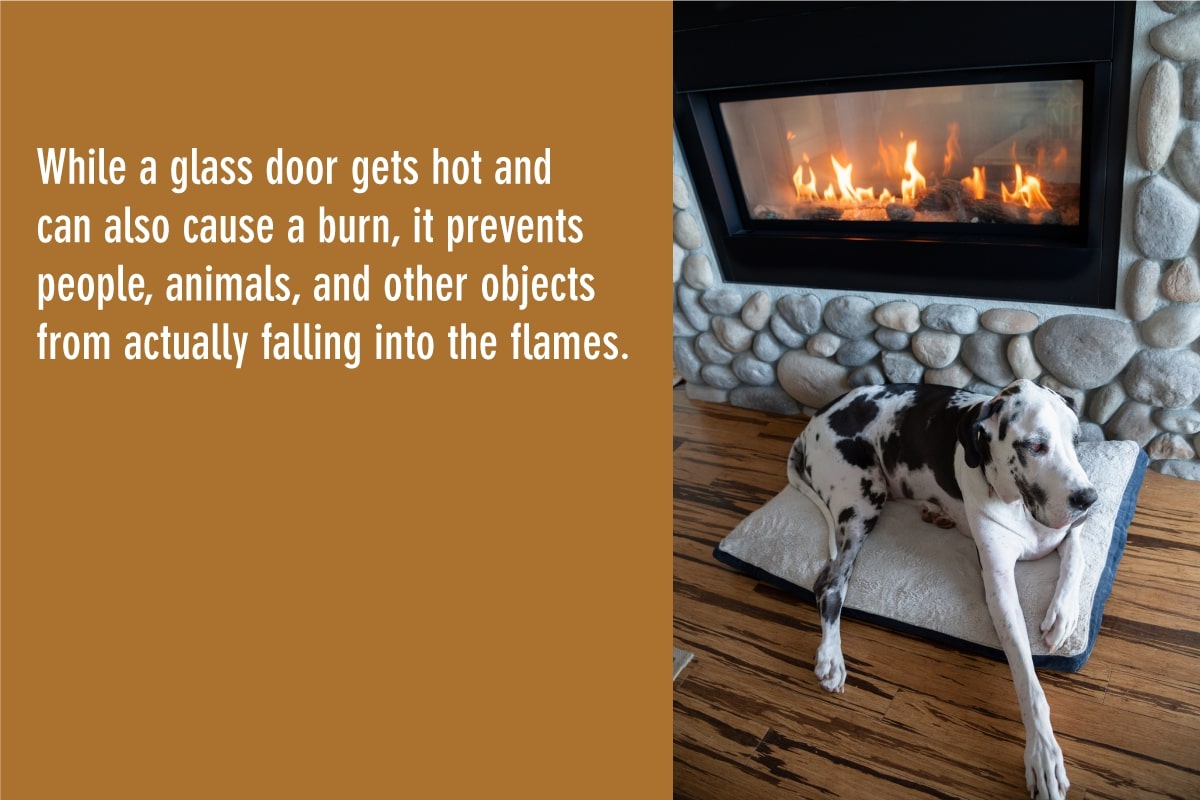
3 - Have the Damper Properly Sealed and Working
Many people know their fireplace has a damper, but sometimes they are a little confused about how it functions.
Essentially, the damper regulates airflow and, thereby, the intensity of the fire.
Because fire needs air to burn, it has more oxygen and burns hotter if the damper is open. If the damper is partially closed, airflow is restricted, and the fire doesn’t burn hotly.
The fireplace damper is the key to regulating your fire, so it is as efficient as possible.
A damaged damper means losing heat, and your fireplace is less effective. So, if your damper is damaged or not properly sealed, you should have it cleaned or replaced.
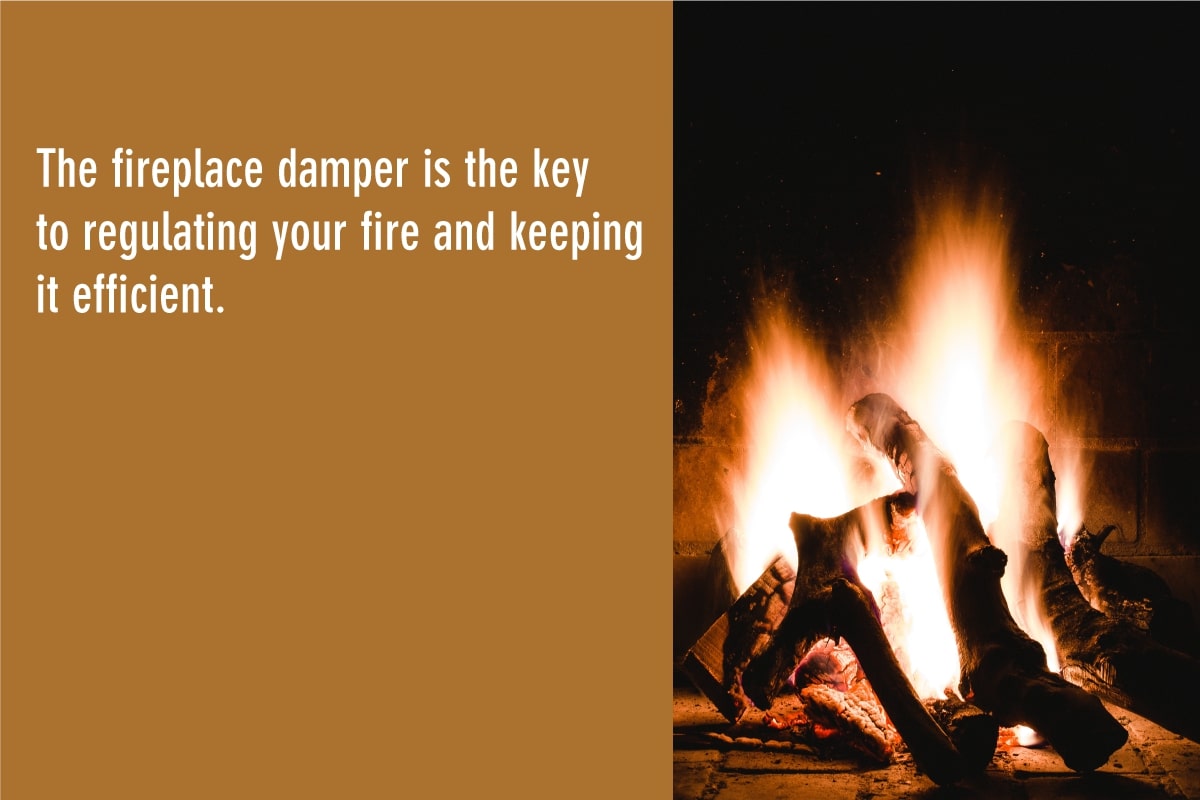
4 - Burn Dry Material
If you have a gas fireplace, you can skip this point, but this point is critical if you burn wood or a wood replacement (fire blocks or wood pellets)!
Why is dry material such a big deal for an efficient fireplace?
If wood material is wet while being burned, it has many adverse effects, including:
- An increase in soot and smoke
- An increase in emissions
- Less heat
- Blackening of the fireplace (or stove) and chimney
Wood material should be seasoned, meaning its moisture content is less than 20%. When drying or purchasing wood material, ensure it is dry and ready to burn - it isn't worth the effort to burn it wet! It's inefficient and creates a lot of mess and work for you.
Ebyland offers Fireblox, Wood pellets, and Firewood that is packaged, dry, and ready to burn. You can pick it up at our store, or we can deliver it directly to your home! Visit our website to learn more and to order online.
5 - Keep the Chimney Clean
Like the glass door, a clean chimney increases both safety and efficiency.
Regarding safety, a clean chimney helps prevent a chimney or house fire when using a stove.
When you burn wood products, some residue, soot, and creosote (a type of carbon tar) stick in the chimney. If these products build up over time, they can ignite from a burning ember and start a fire.
From the efficiency side, a clean chimney means the fireplace's airflow is consistent and clean. This helps protect the damper and other seals in the fireplace, making the fire better contained, more efficient, and easier to regulate.
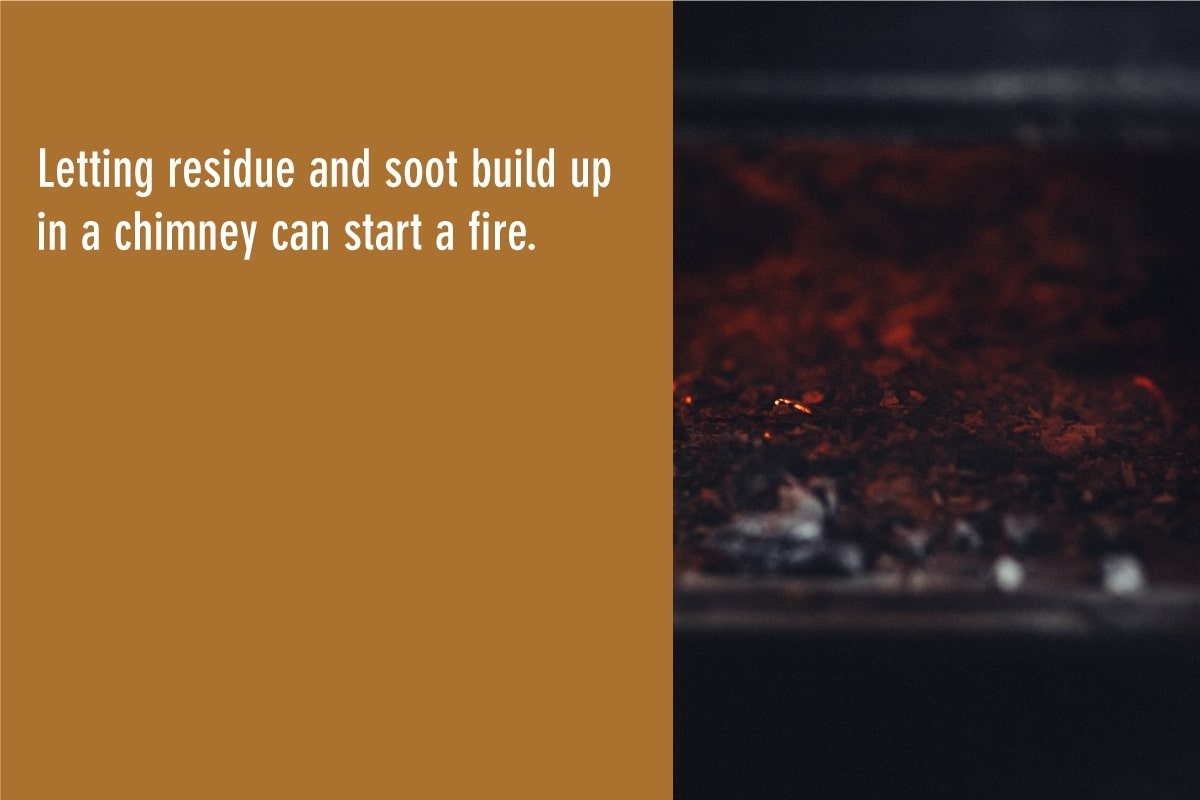
Conclusion
If you are tired of your old, clunky furnace or are horrified by your monthly heating bill, maybe it’s time to consider a fireplace or stove for your home.
Fireplaces and stoves are superior to central heating systems in almost every way. And although upgrading always includes upfront costs, the investment in your future is worth it.
If you live in Cumberland, MD, or nearby, visit the Ebyland store for available stoves and fireplaces in Cumberland (as well as the surrounding areas). We offer a variety of gas, wood, and pellet stoves and fireplaces.
As your local hearth and fireplace supplier and installer, we have a friendly and knowledgeable staff who would love to help you pick the perfect stove or fireplace for your home.
We have more than hearth and fireplace supplies, too! We carry lots of great outdoor living products as well, such as:
And much more!
Contact or visit us today. We look forward to helping you!

